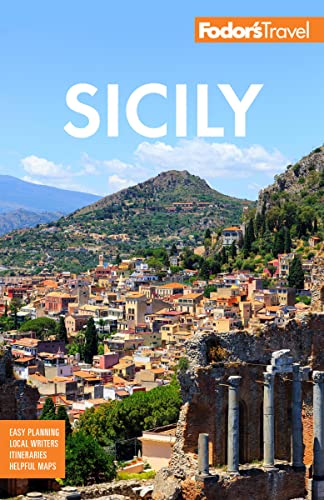If you want to experience Sicily at its most beautiful then head to the southeastern portion of the island, where you can explore stunning baroque-style towns that seem to glow in the evening sun, unspoiled beaches where you can swim almost all year round, and hidden hillsides full of olive groves and wild herbs. And you'll be taking in all of these while indulging in world-class Sicilian food and wine.
The cities of Siracusa (Syracuse to non-Italians) and Modica are the most popular stops for travelers to this region. Siracusa has the charming island of Ortigia attached to it, where you can wander around the relatively traffic-free streets, bar-hopping and taking in the sights and an obligatory gelato along the way. Head into the main part of Siracusa for an afternoon wandering around its remarkably well-preserved Siracusa Archeological Park, which includes the stunning Greek theater (the most complete still in existence).
Surrounding Siracusa, you'll find the Val di Noto, one of the three valli, or administrative regions, that historically made up Sicily. The towns in this region have all been declared UNESCO World Heritage Sites, due to their stunning Baroque architecture.
On the opposite side of the region from Siracusa, the UNESCO World Heritage town of Modica is famous for its chocolate, made with a special cold-working process. But it's also a charming, historical stop on its own, partly due to it being "split" into high and low parts. You can indulge in chocolate-tasting in the lower half and then walk it off by hiking up to the upper part of the city to glimpse some beautiful architecture and stunning views over the local valley.
Beyond these two hubs, there are more hidden delights to discover in the region. Travel a short distance from Siracusa to the less frequently visited Noto, filled with many picture-postcard examples of Baroque architecture; you might even feel like you're walking around a film set. A city of a similar name has existed in this area since records began, but the "modern" city was rebuilt in the 18th century after the earthquake of 1683 devastated the area.
From Noto, move onto Scicli, where you will experience the most relaxed of the towns in the southeast. Its main street is a UNESCO World Heritage site, and around every corner you'll find breathtaking architecture and tempting bars; just outside the town, ruined churches dot the hillside. If the weather is nice, make a visit out to the churches by taking a small trek on the well-worn steps that lead up to them. The churches themselves might not be much to behold, but the accompanying views will make your head spin.
Head next to Ragusa, where a labyrinth of cobblestone streets houses a collection of Baroque palazzi and churches. Also separated into two sections, Ragusa Ibla, or lower Ragusa, is only slightly larger than one square kilometer, but is home to no less than 14 UNESCO World Heritage buildings. If you're staying in the more modern section (Upper Ragusa), don't miss the chance to climb the steps to Church of Santa Lucia at sunset; at the top, you'll be awed by the scene of tiled rooftops, domes, and other architectural delights lit by the evening sun. The final part of your tour of this fabulous area should be the small town of Palazzolo Acreide, home to the fascinating archaeological park of Akrai. Further north is the just as underrated Necropoli di Pantalica, where more than 5,000 tombs of various shapes and sizes line the limestone cliffs. The site is said to date back to the 13th century BC, but was updated and built up by the Romans.
Whether you hit up all the major sites in southeastern Sicily or just a few, a trip here is bound to be filled with all the highlights you expect from Sicily (quaint countryside, magnificent architecture, and fascinating history) and none of the crowds.




